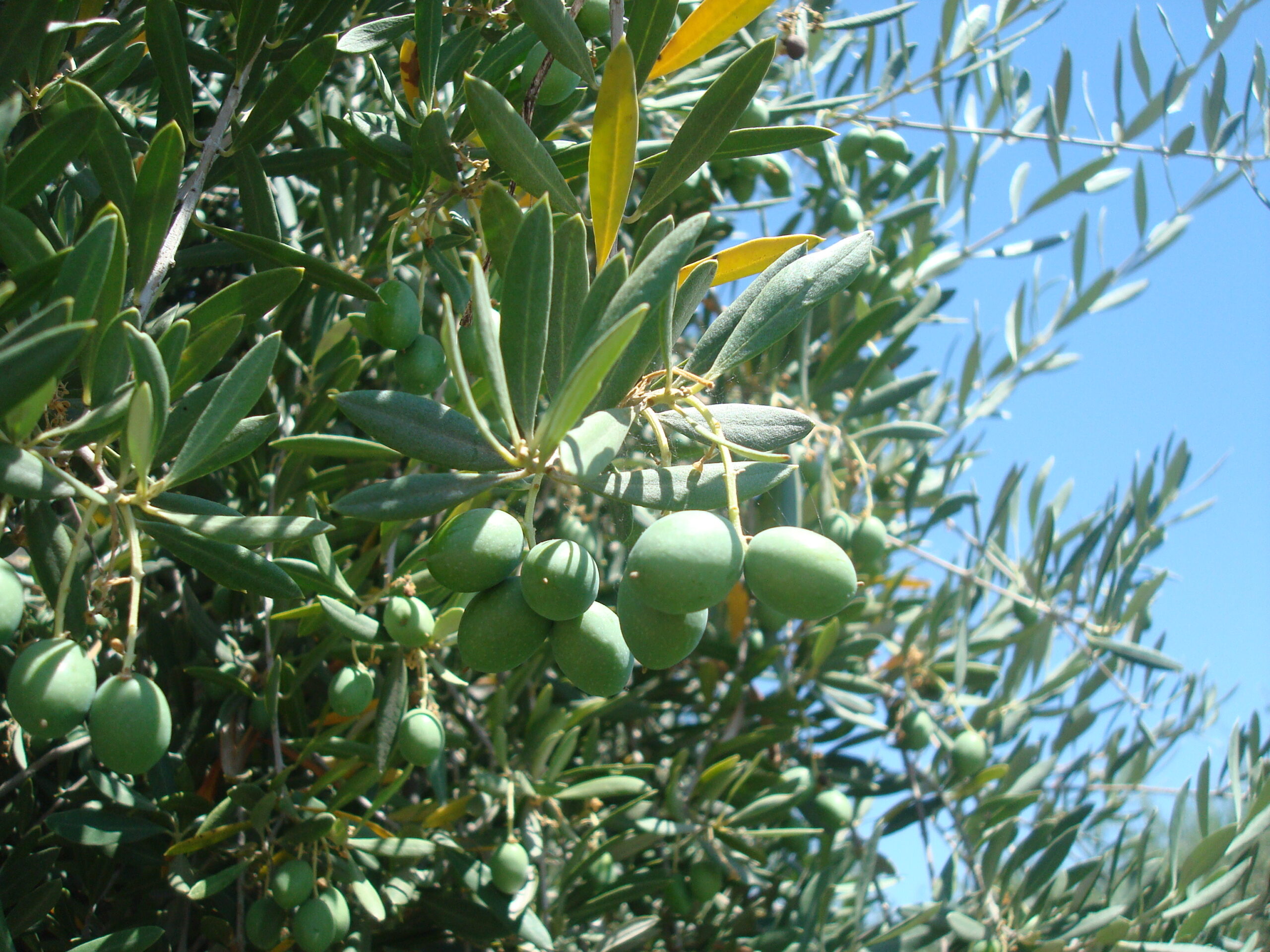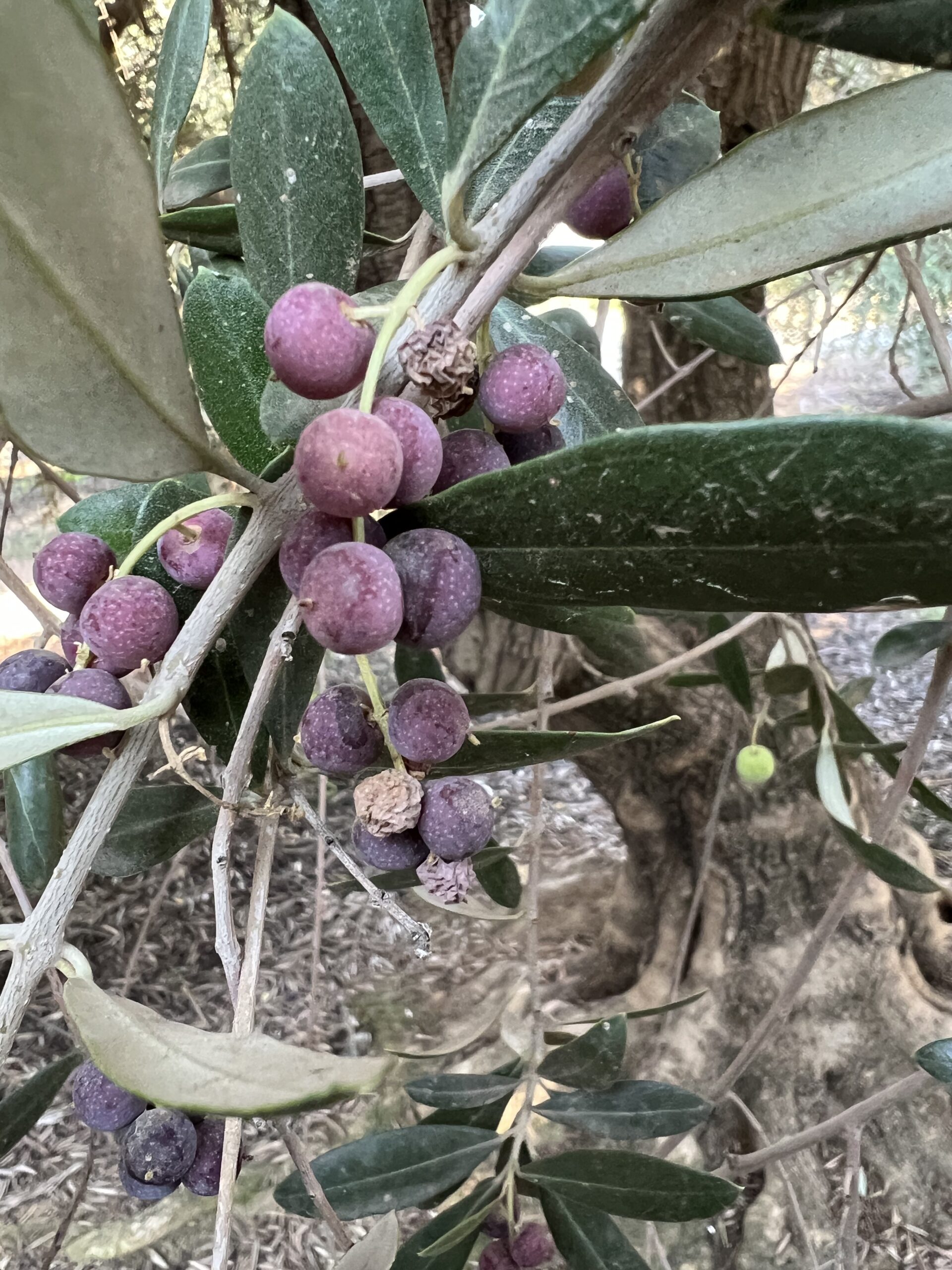
By Elizabeth Fichtner, PhD , Farm Advisor, UCCE Tulare County
The olive orchards around Ivanhoe and the greater southern San Joaquin Valley have been noticeably quiet during harvest season. Instead of harvest crews deliberately harvesting the historic table olive crop, many orchards remain unharvested and the fruit receiving stations have shut down early. The lack of a harvestable crop is the direct result of the climatic conditions during olive bloom in May.
The table olives grown in our region are all one variety (‘Manzanillo’) that are sold for the black ripe olive industry. Black ripe olives are those typically purchased in cans, often sliced, and used as pizza toppings. Olives are wind pollinated and the ‘Manzanillo’ variety is typically self-fertile, meaning that ‘Manzanillo’ pollen can fertilize ‘Manzanillo’ flowers. The optimum conditions for flowering are when daily temperature maximums are between 60 and 65⁰ F and minimums are between 35 and 40⁰F. This self-fertile system fails when temperatures rise above 87⁰ F during bloom. This year, during the May bloom temperatures rose over 90°F for several consecutive days. The hot temperatures limit the development of ‘Manzanillo’ pollen, consequently affecting the fruit set. To combat this problem, some growers have interplanted another variety (‘Sevillano’) in their orchards. The ‘Sevillano’ pollen is less susceptible to heat, but there is less demand for the ‘Sevillano’ fruit due to its large size.
The heat at bloom during May 2023 limited the fruit set of the local ‘Manzanillo’ crop. Small fruit without a pit formed on trees by a process known as parthenocarpy, a type of fruit development in the absence of fertilization. The small parthenocarpic fruit produced on olive trees are called ‘shotberries.’ Shotberries are the size of blueberries and may be numerous on olive trees; however, they have no economic value.
Olive trees tend to ‘alternate bear’ meaning that they produce a heavy crop one year and then a lighter crop the following year. When heat and bloom causes a near total crop loss, the alternate bearing system.
When heat during bloom affects the current year’s crop, it often predisposes the tree to produce a heavy crop the following year. An extremely heavy crop is also not economically valuable for growers because large yields tend to result in small fruit size. Throughout the winter and spring, growers may use several techniques, such as pruning or the application of plant growth regulators, to manage the 2024 crop load. The success of these orchard management practices is dependent on cooler temperatures during the 2024 olive bloom season.


Comments are closed.